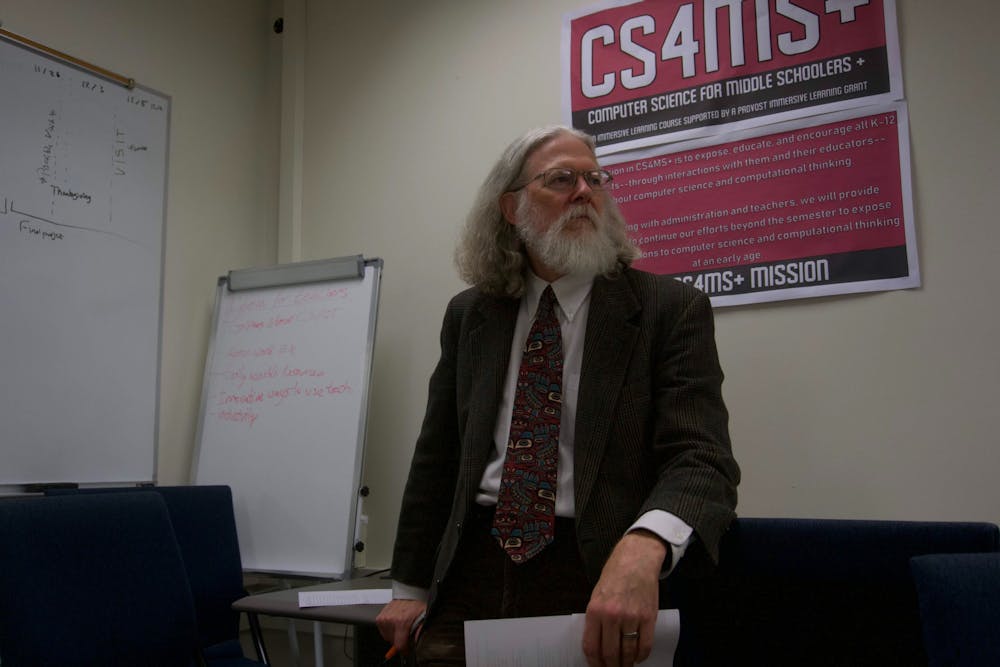Editor’s Note: Will English, The Daily News’ web developer, was a part of the immersive learning class mentioned in the article.
For three years, Ball State computer science students have worked to make their field available to the next generation of computer scientists.
Since fall 2017, Ball State computer science professor Dave Largent and his students have partnered with Northside Middle School, Burris Laboratory School and Muncie Central High School for an immersive learning program focused around teaching computer hardware and software.
The program, Largent said, encourages involvement in computer science by teaching both students and teachers alike, so teachers can continue the instruction after the project’s completion.
“Overall, the goal would be to get as many grade school and high school students exposed to computer science as possible,” Largent said.
The original idea for the project, Largent said, was based on the idea of bringing more diversity to computer science, which he called “very white male dominated.”
“As I've looked at possible solutions to [the lack of diversity], one of the solutions I realized was if we can educate or make young students aware of the possibility that they can be a computer scientist in the future, then that's going to fill that pipeline more diversity,” Largent said.
The groups of Ball State students participating in the project met several problems during the semester, including the fact that some Muncie Community Schools teachers had little to no experience in computer science, said project member Corbin Creedon, senior computer science major. Some of the biggest complications in the process involved getting teachers to open up to the learning themselves.
“Something that immediately came up for specifically our group is how our teacher had no computer science background at all,” Creedon said. “He was hired in the summer, took a quick week lesson plan from Project Lead the Way (PLTW) to learn some stuff, and that was it.”
Largent’s students were also challenged to interact with the middle and high schoolers over the course of several meetings throughout the semester, during which they taught the students in both the physical construction of computers and the creation of software.
Junior computer science major Sara Bailey said her experience as a woman in the field of computer science was an important part of wanting to work with younger students.
“I also liked working with kids, and I thought, the idea of helping kids, and especially girls like younger girls get into computer science was exciting, because personally, I know that I didn't have that much support in middle school,” Bailey said.
Bailey and her group taught the students for nine weeks. At the culmination of the course, the students were asked to assemble a final project that showcased their understanding of computer science.
For the classes near the end of the semester, that meant designing holiday decorations.
“For these nine weeks because of Thanksgiving and Christmas, [the final projects are] primarily holiday based, so one of them was [to] create a small light system to be seen in the dark, or something like that, or create a waving Santa through [an input],” Creedon said.
Going forward, Largent said he hopes to implement the project beyond the fall semester of each year.
In an immersive learning project composed primarily of computer science students, Largent said lowering the number of credits and adding a spring semester could make the project more appealing to students outside of the field.
“[Adding the spring semester] will provide continuous interactions with the schools throughout the year,” Largent said in an email. “With the reduced credit hours, I’m hopeful to include more students, and maybe even include some education majors as well, as it will be easier for them to include another small class into their schedule.”
Contact John Lynch with comments at jplynch@bsu.edu or on Twitter @WritesLynch.





